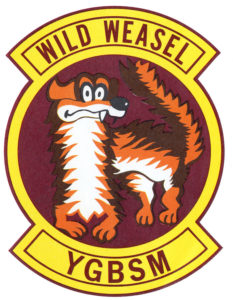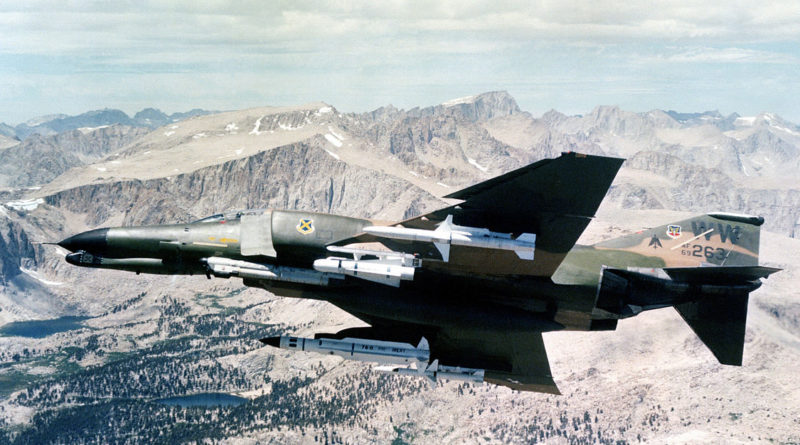‘Wild Weasels’ Serve as Bait for Anti-Aircraft Guns
With the recent invasion of Ukraine by Russia, most of the world has been closely following military strategy, and it’s clear that air superiority is key. Ukrainians have managed to hold off the Russian invasion for over 18 days so far, thanks to a number of factors such as their own determination and resolve, as well as the incompetence and lack of preparedness of the Russian army.
However, a very important factor for Ukraine’s defense so far has been anti-aircraft weaponry. In particular, “Stinger missiles” have been used to help defend the country from Russian assault. As of March 7, NATO countries have reportedly supplied over 2,000 such missiles to Ukraine.
Ukrainian president Vlodymyr Zelenskyy has also been pleading with allies to send aircraft or help enforce a no-fly zone over Ukraine, further reiterating the importance of the skies in modern military actions.
While modern warfare has involved aircraft since World War I, the technology and strategies involved have changed considerably since. World War I primarily saw planes with mounted machine guns used for anti-infantry attacks and reconnaissance. Bombing from airplanes was pioneered ruing the first World War but wouldn’t be perfected until the second, to devastating consequences. The bombings of World War II became a regular occurrence for many in Europe with little defense against air raids. Cities would simply ring an alarm so people could take cover, and turning out your lights was perhaps the most effective anti-air defense for the time. Notably, World War II ended with the first and only uses of nuclear bombs in war, both of which were dropped from airplanes to demolish two Japanese cities.
The Vietnam War was perhaps the war to most test and push the boundaries of air combat. Helicopters were an important part of America’s involvement in the war, and the horrors of napalm bombing are still remembered today as some of the worst atrocities committed in modern times. However, what was particularly new in Vietnam was resistance to air attack.
Surface-to-Air Missiles, or SAMS, had started development during World War II, but none went into operation during that war. Following World War II, world superpowers realized the importance of air defense and SAMs became a high priority, but there would be few opportunities to field test them until the proxy wars of the Cold War.
The first war to see guided SAMs deployed and used effectively was the Vietnam War. The Soviet Union supplied several SAMs to North Vietnam in its fight against the US and South Vietnam. The United States was unprepared for this kind of defense and suffered heavy losses at the hands of Soviet missilemen. Overall, 3,374 US aircraft were lost in combat in Vietnam.
The Wild Weasel changed the odds, but perhaps too late to change the outcome of the war. In order to counter the anti-aircraft missiles, the US military devised a strategy to lure out anti-aircraft weapons using an airplane as “bait”. This aircraft was designated a “Wild Weasel”, and it was equipped with anti-radiation missiles which were designed to target and destroy anti-aircraft radar. These Wild Weasels would fly into an area and bait anti-aircraft weapons into outing their location so that they could then be bombed. The Wild Weasel pilots also had to be trained in avoidance techniques since they would almost immediately have guided missiles sent after them.
While the first Wild Weasel programs were effective in protecting other aircraft from anti-aircraft attacks, most of the Wild Weasel bait aircraft were shot down. Many pilots were killed and several taken prisoner as a result. This led to further development of technology and tactics which eventually resulted in a much higher survival rate for the Wild Weasels.
Still, even with updates such as carrying plenty of chaff (launchable debris intended to distract or obscure guided missile systems) and using electronic countermeasures to jam guided missile signals, the Wild Weasels were operating at very high risks. After all, their primary purpose is to be shot at. This led to the unofficial motto of the Wild Weasel crews becoming “YGBSM”, meaning You Gotta Be Shittin’ Me.

YGBSM would appear on the logo patch for many Wild Weasel squadrons. The motto supposedly comes from a pilot who reiterated the mission once given to him, saying, “I’m gonna fly with you, and we’re gonna shoot a SAM site before it shoots us? You gotta be shittin’ me!”
“First In, Last Out” was also a common motto among the Wild Weasels.
Despite the immense risk, the program was ultimately successful in reducing the combat losses of B-52 bombers. Toward the end of the fighting, the shootdown rate fell to 7.52%, allowing the majority of bombers to strike their targets. Still, this was perhaps too little too late, and combined with other strains on the American military from the war, the US ultimately withdrew from Vietnam.
Wild Weasels wouldn’t be needed in combat until the Gulf War. These days the Wild Weasel role still exists and is carried out by the F-16 Fighting Falcon. However, because of the versatility of modern aircraft, most aircraft are able to provide effective countermeasures and counterattacks against anti-aircraft weapons. So the designation of a particular Wild Weasel is less important, but the tactic of ferreting out anti-aircraft defense systems is still vital to modern combat.
